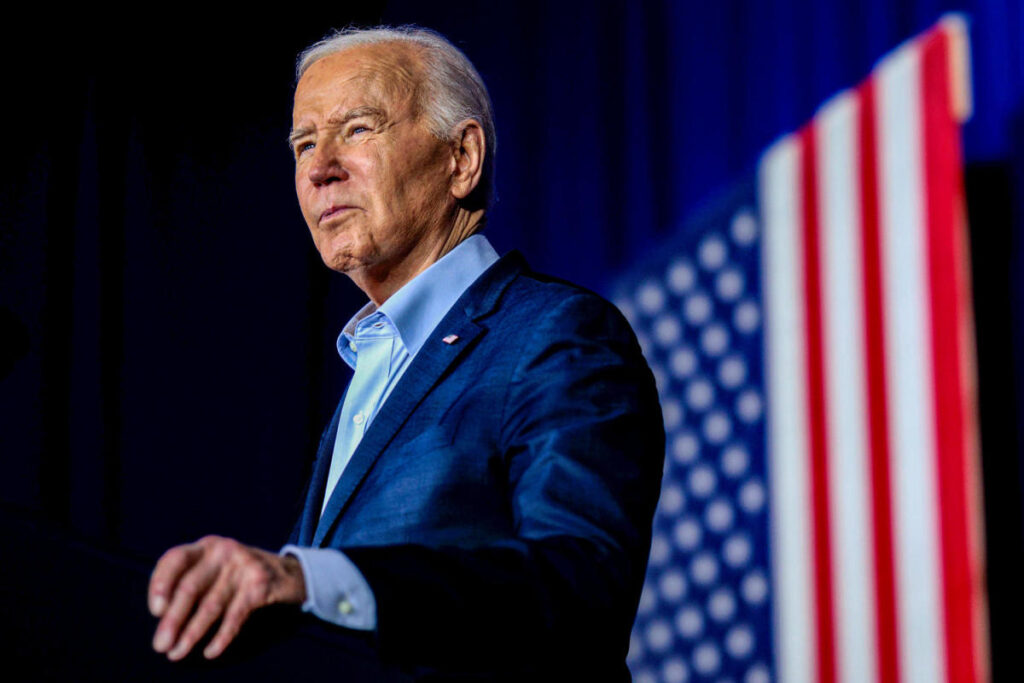As President Joe Biden faces a challenging campaign season, there is a concerted effort among his advisers to maintain a so-called “Biden coalition,” comprising key voter demographics crucial to electoral success. This coalition encompasses white working-class voters, seniors, and union members, with particular attention being directed toward states like Pennsylvania. With Vice President Kamala Harris now leading the Democratic ticket, the focus has shifted to how these voters can be effectively mobilized. A pro-Harris super PAC is aggressively running ads during prominent events like the Major League Baseball playoffs, showcasing testimonials from working-class individuals and former Trump supporters aligning with Biden’s message. In parallel, a coalition of labor groups is directly engaging union members in battleground areas to underscore Biden’s accomplishments during his presidency.
Harris is making significant headway in appealing to these critical voters, often replicating Biden’s campaign strategies. Minnesota Governor Tim Walz, who is Harris’s running mate, emphasizes the shared values between Harris and Biden, particularly in patriotic rhetoric. In Scranton, Pennsylvania, where Biden delivered a key economic address, Walz articulated a vision of patriotic leadership centered on prioritizing American citizens. Additionally, Biden continues to engage with core constituencies, conducting low-profile events and directly addressing tribal voters who were instrumental in his previous victory in Arizona. According to Senator Chris Coons, who is a close Biden ally, Harris is effectively filling the gap left by the president’s campaign activities, reinforcing the connection between Biden’s objectives and the Harris campaign.
The dynamics in Biden’s re-election effort require Harris to walk a tightrope between allegiance to the president and carving out her own distinct political identity. While she acknowledges the importance of Biden’s legacy, she firmly asserts that her presidency will not merely be a continuation of his. The president’s supporters argue that highlighting Biden’s economic achievements remains essential in maintaining support among his base. Notably, Randi Weingarten, president of the American Federation of Teachers, described the current administration as historically significant, despite the divergent public perception. Her union’s members are playing an active role as advocates for Harris, trying to demystify her political persona among voters who might be skeptical or unfamiliar with her history.
While the administration’s track record has been quite impactful, the messaging surrounding Harris has pivoted significantly. Future Forward PAC, which initially focused on Biden’s re-election, has now dedicated its efforts to supporting Harris with ads that promote tax fairness, echoing Biden’s core principles. This new strategy has emerged alongside collaborative events featuring prominent figures like Senator Bernie Sanders, who underscores the administration’s achievements and aims to harness support from progressive voters. During campaign stops across the country, Sanders highlights the importance of continued Democratic leadership in combating issues like pharmaceutical greed that affect the broader public.
Biden’s campaign strategies remain deeply intertwined with union outreach, as evidenced by his upcoming engagements with labor organizations representing construction and energy workers. His administration’s commitment to collaborating with unions has been solidified through direct meetings with labor leaders that focus on galvanizing their support for Harris. Additionally, Biden has kept his communication lines open with voters through various outreach methods, including personalized videos and robocalls, furthering the narrative of a united front between him and Harris.
Ultimately, the intersection of Biden’s ongoing legacy with Harris’s emphasis on independence lays the foundation for the Democratic campaign in 2024. Challenges abound as the administration grapples with public perception, but the coordinated efforts to rally support among key voter demographics, peaceably drawing upon both leaders’ qualifications, reflect profound intent to solidify the Democratic coalition. The contrasting realities of the administration’s successes and the public’s current sentiments illuminate the critical task ahead: to reinforce voter support for a ticket that encompasses both continuity and change necessary for progressing the Democratic agenda.

